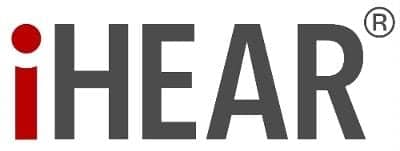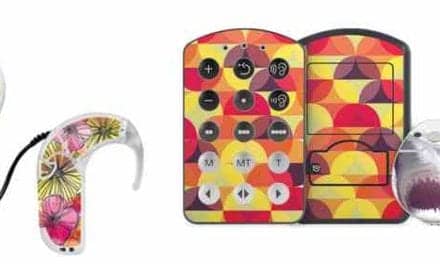A new liquid repellent nano-coating promises to transform standards of reliability by overcoming the limitations of traditional liquid repellency approaches.

|
| Stephen Coulson, PhD, is the chief technical officer and founding member of P2i, a leader in liquid repellent nano-coating technology. Coulson invented the P2i technology while carrying out his PhD at Durham University on liquid repellent surfaces, and was subsequently employed by the UK Ministry of Defense and Nuclear Biological and Chemical clothing program. Correspondence can be addressed to HR or . |
According to the Hearing Industries Association (HIA),1 the proportion of behind-the-ear (BTE) models dispensed increased from 57.3% in 2008 to 64.1% in 2009, constituting about 1.7 million units. But closer scrutiny of the figures also reveals that some 40% of the BTEs sold in 2009 were the latest, smallest, most discreet devices, and almost three-quarters of those were receiver-in-canal (RIC) BTEs. These figures reflect the growing aspiration—especially among first-time users—for a hearing instrument that can be worn unobtrusively and for longer periods of time as an integral part of an active lifestyle.
However, as designs become smaller and more delicate, they are also increasingly difficult to protect. Hazards faced by hearing instruments are principally liquids, such as sweat, water, and humidity. For example, in the January 2010 issue of Hearing Review, Hall and Croutch2 highlighted the strong correlation between receiver problems and relative humidity levels inside the ear.
Because RIC/BTE-type devices are delicate and contain delicate digital electronics, repair costs (to manufacturers via warranty failure and users via accidental damage) are potentially high. What’s required, therefore, is a means of protecting these components against the effect of aqueous and oleous (eg, cerumen) contaminants.
Limits of Traditional Approaches
Traditional ways of protecting the delicate electronics in hearing aids have involved the use of spray- or dip-applied coatings, but three limitations detract from their appeal:
- Traditional protection is applied to individual components. After assembly, not all of the instrument will be protected equally.
- Spray and dip coatings are not durable and rub off relatively easily.
- Spray and dip coatings can be too thick to protect fine-tolerance acoustic components without affecting their performance.

|
| FIGURE 1. An Aridion-treated hearing aid (above) and an untreated hearing aid (below) following the hearing aid corrosion test. |

|
Aridion™ technology by P2i, located in Abingdon, Oxfordshire, UK, is designed to overcome these limitations in a new and very different way. Plasmas3 have long been known for their use in modifying the surface properties of materials.4 Aridion uses a special ionized gas (plasma) created in a vacuum chamber to apply a pinhole-free protective polymer layer over the entire surface of a finished, fully constructed hearing instrument. This layer is nanoscopically thin, and lowers the surface energy significantly so that, when liquid comes into contact with the material, it forms beads and simply rolls off.
The way Aridion™ treats finished items and penetrates their complex structures is a step-change improvement upon traditional coatings. The patented technology works at a pressure régime that allows full penetration of the complex device, while the energized gas allows durable attachment to the plastics, metals, and other materials from which the product is constructed. This results in total device protection at the nano scale.
Improved Reliability? No Sweat
Improved reliability has been demonstrated by P2i in the industry standard sweat test, in which a hearing instrument placed on a prosthetic ear is exposed to continual drops of a sweat solution for several days.
As before/after images show (Figure 1), no visible corrosion occurs in the Aridion-protected device after the sweat test, while visible corrosion is apparent in the uncoated sample. In tests with multiple samples, 100% of the Aridion-protected samples passed but only 20% of the uncoated products passed.
Longer-lasting Protection
Because the nano-coating establishes permanent molecular bonds with the surface substrate, it is much more durable and robust than traditional approaches. P2i’s tests show that Aridion is five times more durable than traditional coatings, being able to maintain an effective degree of water repellency for 600 abrasion cycles; uncoated samples lose their efficacy after just 100 cycles. Additionally, the strong bonding means the coating will not leach away.
Importantly for increasingly miniature devices, the Aridion coating does not affect the performance of acoustic components in a negative way like many traditional approaches. It is 1,000 times thinner than a human hair, making it acoustically transparent and imperceptible to users.
When complete hearing instruments are treated using the Aridion process, they achieve much stronger resistance to liquids than would be possible by assembling components that are individually treated using alternative techniques. The resulting improved product reliability is likely to decrease the number of repairs per unit, saving money, time, and frustration for manufacturers, dispensers, and end users alike.
References
- Hearing Industries Assn (HIA). HIA Quarterly Statistical Report. Washington, DC: HIA; February 2010.
- Hall CM, Croutch C. A field study on the effect of relative humidity on hearing aid receivers. Hearing Review. 2010;17(1):32-35.
- Grill A. Cold Plasma Materials Fabrication: From Fundamentals to Applications. Hoboken, NJ: Wiley; 1994.
- Biederman H. Plasma Polymer Films. London: Imperial College Press; 2004.
Citation for this article:
Coulson S. Hearing aid component protection. Hearing Review. 2010;17(4):52.





